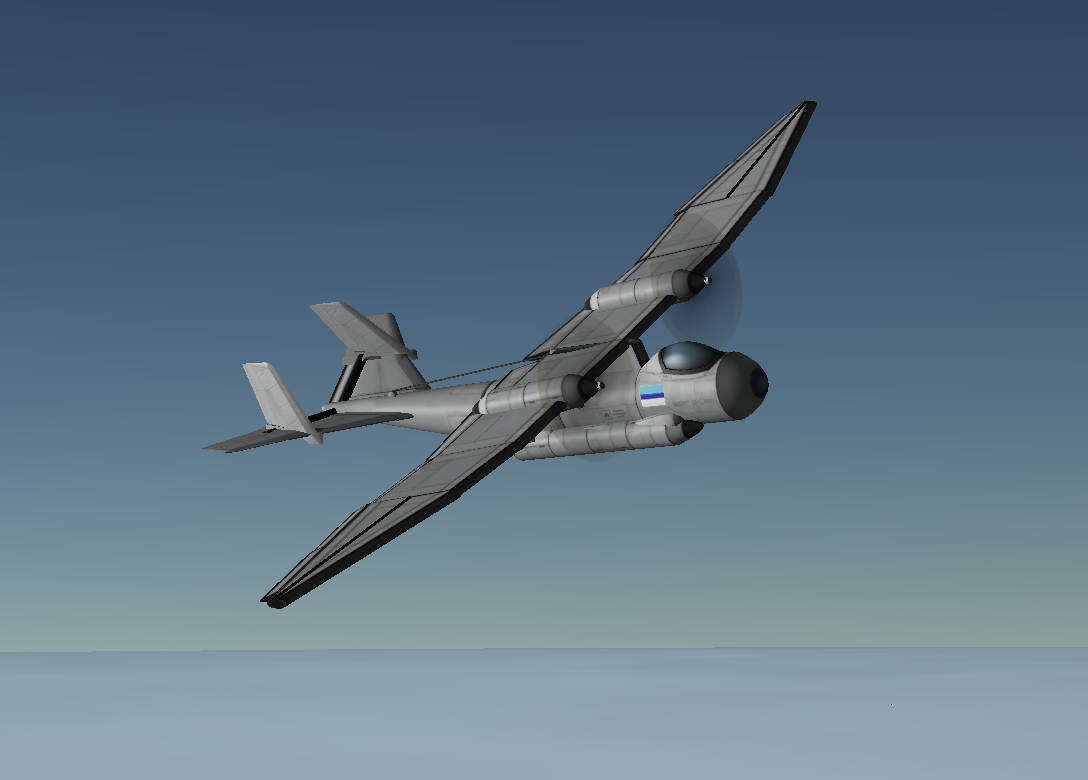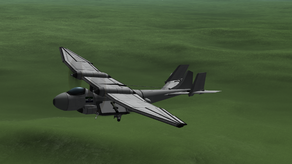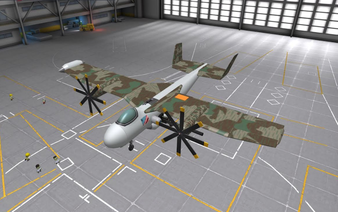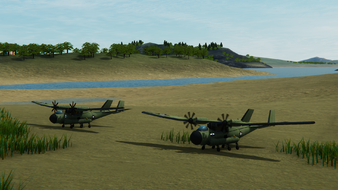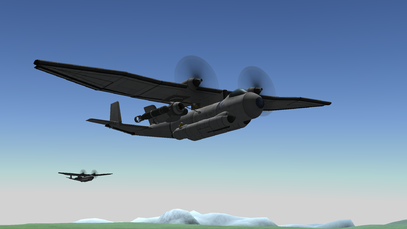Dingo Multirole Transport Aircraft: Difference between revisions
No edit summary |
No edit summary |
||
| Line 29: | Line 29: | ||
=== Export Model Dingo === |
=== Export Model Dingo === |
||
| − | [[File:ZekesScreenshot1466.png|thumb|338x338px|Dingo Block II aircraft on a forward airstrip, |
+ | [[File:ZekesScreenshot1466.png|thumb|338x338px|Dingo Block II aircraft on a forward airstrip, 2074]] |
A small number of export Dingos were license built and modified by Basil in 2058, and were thought to have been scrapped around the time the Zokesians scrapped theirs. It was discovered years later they were still operating on a limited role until finally being retired in 2067, following their service in the Behin-Basil War. |
A small number of export Dingos were license built and modified by Basil in 2058, and were thought to have been scrapped around the time the Zokesians scrapped theirs. It was discovered years later they were still operating on a limited role until finally being retired in 2067, following their service in the Behin-Basil War. |
||
Revision as of 09:49, 12 January 2023
The Dingo Multirole Transport Aircraft is a multirole utility, twin prop aircraft built by Ward Industries, Zokesia. Developed in late 2056 off the hull of the failed "Schoona" Seaplane, the Dingo was sold initially as a bush war support plane, designed to provide close air support via direct line-of-sight fire on enemy ground units.
Block I Dingo Models
Block I Dingos were commonly known as "Spookies" even though only the initial type was built as such. Constructed from 2057 to 2058 for the Zokesian Air Force, they were mothballed and sold off or scrapped following the start of the Blackout 100 Stealth Bomber Program which did not come fully online until 8 years later.
Dingo "Spooky"
The first model (Block I) "Spooky" Dingo, of which 19 were produced, featured a 105mm cannon, 30mm chain gun, 20mm Vulcan, and two .50 Machine guns pointing out the left side. Angled in such a way the aircraft could complete 2 minute turns around a target, the aircraft's slow speed and large wing allowed for a stable firing platform even when all weapons were active. The guns could be fired independently or chained to e Mk58 master fire control system, which could be visually or FLIR/NV aimed. The crew of one meant the pilot had to aim and fire while flying, making enemy ground fire complex to avoid while attempting to saturate the target. It was successful in hovering beyond long gun range, while still being able to target and destroy ground units. as long as there was no SAM sites in the area it was operating, as its radar signature made it large enough to be locked easily by most radar systems of the day.
Dingo "Speccops"
The second variant developed was the Block I "Speccops" version, when the Zokesian Air Force determined there was no longer a need for the Spooky Gunships and sought to convert them into a special operations drop platform.
The theory was that the slow propeller plane made an ideal paratroop carrier, so eight seats with packs were fitted to the sides in the open air where special forces could ride to their target. Ejection from the seats let them drop safely into their targets. The aircraft also featured 18 sepratron rockets on the tail of the engine nacelles for short takeoff capability. Tests proved the ability to land in an area as small as the KSC's VAB Helipad and take off again successfully, demonstrating a superb special forces insertion capability. Unfortunately, these were never utilized with the exception of drops into Vanadia during initial road construction.
Dingo ASW
Another version converted from the Spooky was the ASW Dingo. Designed to carry a multitude of missiles, including the AGM-88 HARM and Torpedoes, this variant was simply too heavy to operate at long ranges or effective speeds. However, Zokesia was facing an acute need for anti-ship platforms due to a lack of naval funds, and some were pressed into service in the Ezekelgrad sector but never saw conflict.
Export Model Dingo
A small number of export Dingos were license built and modified by Basil in 2058, and were thought to have been scrapped around the time the Zokesians scrapped theirs. It was discovered years later they were still operating on a limited role until finally being retired in 2067, following their service in the Behin-Basil War.
A few Dingos also found their way to Dolren in 2066, where they were used with limited success against communist rebels in the south. The rebels lacked effective anti-air, but artillery attacks on airbases left most of them damaged beyond repair.
Block II Remodel
Ward Industries had moved onto other projects in the decade since the Dingo was produced, and there seemed little need for the plane, which had no transport capability and limited combat use in the Air support role. However, the two events would lean designers back to the Dingo. The knowledge of Basil Dingos still flying and fighting in Basil in 2068 brought attention to the durability and longevity of the design, as the planes had suffered over a decade of shoddy repairs and poor field conditions and were able to continue operating.
The second event was the lengthy and eventually unsuccessful attempt to develop the Mi-68 model Attack Helicopter to fill the role the Dingo once had of ASW patrol craft. The Mi-68 was an armored attack chopper which suffered from extremely limited range and armament capacity. It worked well enough on land battlefields, where forward operating bases were easy to set up, but when the development program attempted an ASW version, the limited range became the achillies' heel of the project. At 40km there was no hope for making the heavy chopper feasible over large ocean distances.
Zokesian Designers had to turn to a longer range solution for ASW operations and they found it in the old design of the Dingo. Modernizing the fuselage to carry more fuel and shed weight, the plane was also fitted with Mk III ASW pods designed for the Mi-68 - Mini-subs which parachuted into the water and carried torpedoes to combat range. The mini-subs were a perfect match with the Dingo, which had a high wing and was capable of holding two instead of the MI-68's one. Additionally, the combat range of the Dingo was over 650km, which was acceptable for Zokesian patrol needs and potential offensive capability. The first Block II Dingo was rolled off the Ward Production line in 2069 and production continues every year.
As of now 20 Dingo Block IIs have been built for the Zokesian Air Force, with an additional 9 going to civilian contracts and one exported.
Export Model Dingo Block II
One Dingo Block II Was built without weaponry and delivered to Fish Island Research Station in Spaerka for meteorological data around the South Pole.
